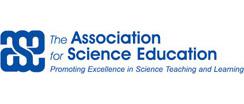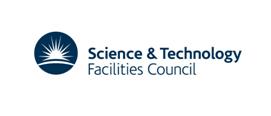Space: Classroom-ready resources
I’ve put together a list of what I think are some of the best space resources that are ready to use in the classroom. All the resources are from the ESERO collection on the eLibrary, and all contain activities for students. A primary resource, Is There Anyone Out There?, has just been published and focuses on a Mars landing – the landing sites are based on real choices from the recent NASA mission, Mars Science Laboratory.
List created by Tom Lyons - ESERO UK Teacher Fellow
- ALL
- Teacher guidance
- Video
- Activity sheet
- Other
Teacher guidance
Rocket Science Activities
This is the number 1 comprehensive rocket guide for teachers. If you want to do experiments with rockets then this guide contains 16 rocket activities - spanning all age ranges. There is also a well written history of rockets and a guide to the physics of rocketry, appropriate for secondary school students. The rocket activities range from easy-to-make, low power rockets to more complex high powered rockets. The IOP do a make-and-take using one of the more complex rocket designs.
Space-based Astronomy Educator Guide
This guide has some good practicals and information on astronomy and has student worksheet appropriate for use in the classroom. The notes on educational standards are for the US.
The introduction to this guide gives a brief, but fairly comprehensive, history of US spacecraft used for astronomy up to the Year 2000.
The guide contains 4 units with practicals and student worksheets:
Unit 1 looks at the atmosphere and gives five practical demonstrations to model how the atmosphere distorts em radiation.
Unit 2 looks at the em spectrum and describes how to build a simple spectroscope, redshift and blue shift using a doppler ball and wavelength and resonance praticals
Unit 3 looks at telescopes and how to build a simple refracting telescope, and a liquid crsytal sheet to demonstrate infra-red detection
Unit 4 contains four practicals which investigate images processing, using colour and coding with binary numbers
Unit 5 gives web links (some outdated at the time of this comment 2012)
There is also a glossary of terms and suggested reading
Science and Engineering on the Moon Challenge
The materials used for the engineering tasks are easy to obtain but the build will challenge your students. The first two engineering challenges can be used a primary level as well as secondary. Ideas about motion, forces and energy are covered. Students are encouraged to design, test, evaluate and improve on their designs.
Video
Is There Anyone Out There?
This is a brilliant resource for Primary, with fun experiements that are easy (and cheap!) to do. It was produced with help from scientists working on Mars projects at Imperial College and written by experienced primary teachers.
This would be an ideal resource to use this year (2012) to link in with the landing of the Mars Curiosity Rover on 6 August 2012. You can keep track of the journey of the Mars Science Laboratory here http://www.nasa.gov/mission_pages/msl/news/WhereIsCuriosity.html
Activity sheet
International Space Station (ISS) Education Kit - Lower Secondary
This is a great space resource for secondary schools.
The first place to start with this resource is pages 4 and 5 of the Teacher's Guide, which gives a list of subjects and topics represented in the exercise units. In addition to science, subjects include mathematics, social science, art, creative writing, history and geography.
The exercise units contain information and fun practical activities related to the International Space Station e.g. making balloon rockets, robotic arms, a water filtration system.
International Space Station (ISS) Education Kit - Primary
Primary teachers love using this resource. It is set out with primary school children in mind - nice colourful pictures and diagrams and not too much writing. The resource covers literacy and language skills, application of number, science investiagtions, arts and drama. There are teacher notes at the end of the chapters. There is a huge amount of material in this pack that will enthuse the engage the pupils.
Cross-Curricular: History Meets Science
This is a great resource which deals with the Moon landings conspiracy theory. Students carry out an evaluation of photographic evidence from the archives of NASA. They become familiar with some of the common fake theories proposed by conspiracy theorists, and match them to common sense explanations that support the authenticity of the photographs.
In the second activity, students ue a game to piece together the sequence events in the US-Soviet space race.
The third activity looks at the development of rockets during the Second World War. It's worth pointing out the students that the decorated Nazi war hero, Wernher von Braun was later the chief architect of NASA's Saturn V rocket - which was key to the Moon landings. Braun was only a member of the Nazi party because otherwise he would not have been able to continue his research.
Hands-on Universe
Activities include: plotting the position of a constellation, making a sundial, a solar system model, modelling the phases of the Moon, making a simple telescope and a water rocket.
Other
Teaching Astronomy and Space: Expand Your Horizons
This is a great resource for use at secondary level.
The videos in this resource are ideal for use in class - they are in small chunks (about 5 mins) and presented by scientists at a level accessible to secondary students.
The classroom demonstrations are short instructional videos for teachers - many of which are very simple to replicate in the classroom.






